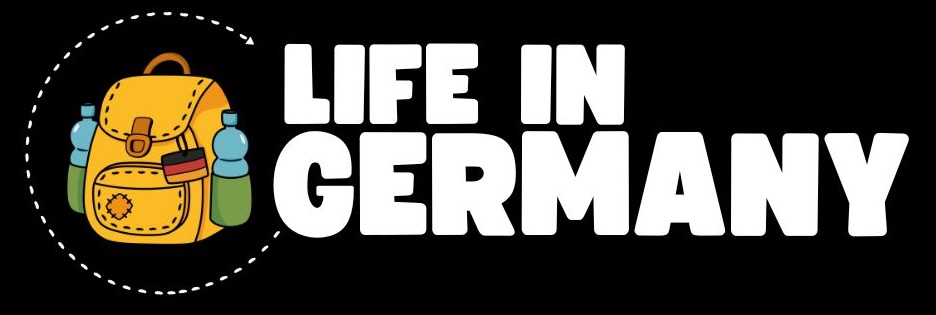Cycling in Germany can be an exhilarating experience, but it comes with its own set of rules and regulations that every cyclist should know. If you’re planning to hop on a bike in Germany, there are eight crucial things that will help you navigate the roads safely and confidently. Whether you’re a seasoned cyclist or a beginner, understanding these rules will enhance your cycling experience. Let’s dive into the essential tips that I wish I knew before cycling in Germany!
What I Wish I Knew Before Cycling in Germany: Essential Tips for a Smooth Ride 🚴♂️
- 1. Follow the Rules: Safety First! ⚠️
- 2. Use Hand Signals Properly 🖐️
- 3. No Right Turn on Red 🚦
- 4. Understanding Road Signs 🛑
- 5. The Importance of Being Roadworthy 🔧
- 6. No License Required for Most Bikes 📜
- 7. Consider Bike Insurance 🚲
- 8. Liability Insurance: A Must-Have 💼
- Conclusion: Ready to Cycle? 🌍
1. Follow the Rules: Safety First! ⚠️
In Germany, the rules of the road are taken seriously, especially when it comes to cycling. Unlike in many other countries, where rules might be loosely followed, here, they are enforced. This means that cyclists must adhere to traffic laws strictly. Familiarizing yourself with these rules is crucial for your safety and the safety of others.
- Stay in the designated cycling lanes, usually marked with red paths.
- If there are no bike paths, cyclists must ride on the road.
- Children up to the age of 8 can cycle on the sidewalk, but adults cannot.
- Children aged 8-10 can choose to ride on the sidewalk or the road.
2. Use Hand Signals Properly 🖐️
Communicating your intentions to other road users is vital. In Germany, hand signals are mandatory for cyclists. Here’s how to signal your turns:
- Left turn: Left hand out horizontally.
- Right turn: Right hand out horizontally.
- Stopping: Left hand up at a 90-degree angle.
- Slowing down: Left hand down at your side.
3. No Right Turn on Red 🚦
Unlike in some countries where cyclists can turn right on red, this is not allowed in Germany. Always stop at red lights and wait for the green signal before proceeding. Additionally, be aware of pedestrian zones; cyclists should dismount and walk their bikes in these areas unless explicitly allowed.
4. Understanding Road Signs 🛑
Recognizing and understanding road signs is essential for safe cycling. Some common signs you will encounter include:
- Bike path: Indicates a designated cycling area.
- Walking and bike path: Cyclists must keep to the left.
- No entry for vehicles: Only cyclists and pedestrians are allowed.
Being familiar with these signs will help you navigate the streets with ease.
5. The Importance of Being Roadworthy 🔧
Your bike must be in good working condition to ride legally in Germany. This means having functioning lights, brakes, and reflectors. Here’s what you need to check:
- Front light must be white; rear light must be red.
- Two independent brakes must function correctly.
- Reflectors on pedals and tires are mandatory.
Failure to comply can result in fines, so regular maintenance is key.
6. No License Required for Most Bikes 📜
Good news! You do not need a license to ride a regular bicycle in Germany. However, if you opt for an e-bike that can exceed speeds of 25 km/h, you will need a motorcycle license. Even though a license isn’t required, taking a cycling course can be beneficial for learning the rules and improving your cycling skills.
7. Consider Bike Insurance 🚲
Bike theft is a common issue in Germany, and having insurance for your bike can provide peace of mind. Here are some tips regarding bike insurance:
- Consider insuring valuable bikes, especially e-bikes.
- Invest in a high-quality lock, like the Abus lock, which is recognized for its strength.
- Check if your insurance requires a specific type of lock for coverage.
Many cyclists find that having insurance is a smart choice. Here are my bike insurance recommendations:
8. Liability Insurance: A Must-Have 💼
While not mandatory, liability insurance is highly recommended for cycling in Germany. This insurance can cover you in case of accidents or damages you may cause to others. It’s especially important if you have children who ride bikes. Statistics show that a significant percentage of residents in Germany have liability insurance, making it a common practice.
I recommend these providers:
Conclusion: Ready to Cycle? 🌍
It’s no secrets that Germans love to ride their bikes. By following these eight tips, you will not only ensure your safety but also enjoy your cycling experience. Whether you’re exploring the city or enjoying the countryside, having the right knowledge will make your journey in Germany smoother.
For a reliable and stylish e-bike option, consider the Fafrees F20 Pro, which combines practicality with performance. Remember, investing in a good bike lock and considering insurance can save you a lot of trouble down the road. Happy cycling!
Made with VideoToBlog





